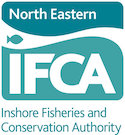The North Eastern Inshore Fisheries and Conservation Authority (NEIFCA) District hosts large numbers of Recreational Sea Anglers who enjoy the benefits of the varying coastal conditions. Sea angling brings many social and economic benefits to participants and to local communities. There are a number of angling charter boats, both boat and shore-based angling clubs, angling shops, as well as thousands of individuals not affiliated with a club located in the North East District. Regional sea fishing social media groups have thousands of members, which reflect the importance of the sport.
Historically, the Sea Fisheries Committees that came before the IFCAs were under no obligation to assess or manage recreational fishing. Now, under the Marine and Coastal Access Act (2009), the NEIFCA has a legislative duty to seek to ensure the sustainable exploitation of sea fisheries resources as well as balancing the social and economic benefits of this exploitation. The term “sea fisheries resources” means any plants or animals that live in the sea excluding migratory fish and freshwater fish (including salmon, trout, eels, lampreys, smelt, and shad).
Recreational sea angling is not regulated in the same way as commercial fishing and there is currently no record of who participates, when and where angling occurs, or what is caught. The NEIFCA collect as much data as possible during routine patrols and inspections but there is still a lack of comprehensive knowledge surrounding the type, extent, and importance of sea angling in our District.
The NEIFCA recognises that anglers hold a wealth of knowledge and data on fish stocks. The NEIFCA wants to engage with recreational sea anglers of all descriptions and is developing a Recreational Sea Angling Strategy to facilitate and develop positive engagement. The Strategy is designed as a live working document that will evolve over time, developing a dialogue with sea anglers and incorporating input and feedback we receive from the sector.
Reporting Suspicious Activity:
If you witness any suspicious fishing or gathering activity please contact the NEIFCA office as soon as possible on the number provided. All calls are dealt with in the strictest of confidence.
Do I Need a Permit?
A permit is not needed if you are a recreational angler. If you plan on taking shellfish, a Limited Shellfish Permit is required. Please visit: www.ne-ifca.gov.uk
Or phone:
(01482) 393515
When collecting any bait for fishing, only take what you will need and try to back fill any holes you dig on the beach.
Try to avoid disturbing resting birds when bait collecting as these animals need to feed at low tide to enable them to survive a long cold winter and even migrate.
Enforcement:
It’s not uncommon for you to see one of our Fishery and Conservation Officers patrolling the coast.
They may want to have a look at what you have caught and make sure it is the right size or is not subject to any restrictions.
Look out for our patrol vessel the North Eastern Guardian III patrolling our coast.
Minimum Conservation Reference Size:
Minimum conservation reference sizes (MCRS) ensure the health of the stock and allow the species to breed at least once before being removed from the sea.
You can contact our office if you are unsure of the correct size for the animal you wish to catch.
For a full list of Minimum Conservation Reference Sizes of fish and shellfish please
click here
Restrictions
Sea Bass:
Please contact NEIFCA for the latest guidance on recreational sea bass fishing.
Tope:
No tope or parts can be taken from the district. All tope must be immediately returned to the sea.
Salmon and Sea Trout:
Any salmon or sea trout must be returned immediately unless you hold an appropriate Environment Agency license.
Shad:
It is prohibited to catch, retain or fish for any shad species. Any shad caught, must be returned immediately
No Take Zones:
A no take zone exists at Flamborough Head. This extends from Sewerby Steps to Danes Dyke and 700m seawards from the base of the cliffs.
Nothing can be taken from the shore or sea.
Keep up to date:
To ensure that you comply with all relevant regulations and for the most up to date information phone:
(01482) 393515
Download our leaflet
